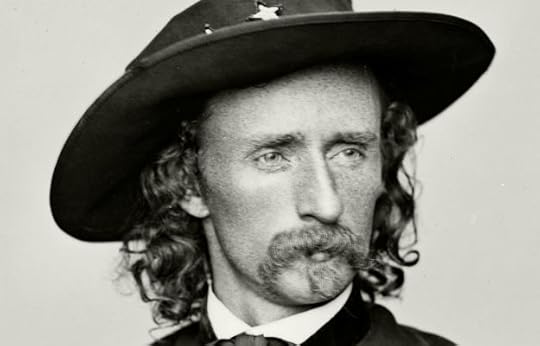Quit picking on poor Gen. Custer, he was just following Army doctrine of his time

By "Tyrtaios"
Best Defense department of
military revisionism
In the spring of 1876, a three-pronged campaign was launched by the U.S. Army to drive the Lakota (Sioux) back
to their reservation.
The first prong, under General John Gibbon, marched east from Fort Ellis
(near Bozeman, Montana). The second prong, led by General Alfred Terry (that
also included Lieutenant Colonel George Custer), headed west from Fort Lincoln
(near Bismarck, N. Dakota), while the third prong consisted of General George
Crook's force moving up north from Wyoming into Montana.
Unknown to Terry and Gibbon, on June 17, Crook encountered a camp near the
Rosebud Creek in southern Montana, and a battle ensued lasting about six hours. Although Crook was not defeated by the standards of the day, having held
the battlefield, it demonstrated the Sioux and Northern Cheyenne would fight
long and ferociously, and must have given Crook pause, as he decided
to withdraw his force to Wyoming. This broke one side of the triangle the
three prongs were supposed to create.
Meanwhile, while Crook was retiring back into Wyoming, Terry was moving
west up the Yellowstone River to the Little Bighorn with the 7th Cavalry, with George Custer scouting up ahead in advance after leaving Terry's sight on 22
June.
On the morning of the 25th, the 7th Cavalry was at a fork between the
Rosebud and the Little Bighorn Rivers, known as the Crow's Nest, where Custer
observed another large camp. It's possible there was a haze by the time Custer came to the Crow's Nest that prevented him seeing how very large the camp actually was.
Concerned the Sioux and Cheyenne might escape, and appreciating the element of
surprise, Custer decided to attack and moved down into the valley of the Little
Bighorn. However, prior to moving, Captain Frederick Benteen was ordered to
beak-off and head to the southwest with three companies to block what was seen
as a likely escape route. A few more miles from the Little Bighorn,
Custer again divided his command, ordering Major Marcus Reno to take three
companies along the river bottom and attack the village on its southern
tip, while Custer would lead the five remaining companies and follow Reno in
support.
As a side note, George Custer's two brothers, Thomas, a two-time recipient of
the Medal of Honor during the Civil War, and the youngest of the three, Boston,
were also with him.
Following the top of the ridge to an intermittent tributary of the Little
Bighorn, Custer may have finally realized the gravity of the situation as the
north end of the village came into view. We know this, and that he must
have become concerned, because he sent a message back to Benteen stating,
"Benteen, come on. Big village, be quick, bring packs, P.S. Bring packs."
The trooper Custer chose to deliver that message was bugler John Martini,
and he would be the last, with certainty, to see George Custer and his fellow
troopers alive. It is at this point that all movements by Custer and his
force are speculation, as no white survivors lived to tell the tale.
Unfortunately, Sioux and Cheyenne accounts of the battle were discounted at the time,
exacerbated probably by the Indians' fear of retribution in coming forward with
their accounts, and/or confused by language barriers, which created
inaccuracies, further complicated by fading memories as time went on.
Was George Armstrong Custer imprudent in dividing his command? Most people
with a passing familiarity with the events will immediately accuse Custer of
poor judgment, and say yes.
However, say what you will about the man's flamboyance and previous dash
toward battle, Custer was no fool in the real sense of the word, and he was a
fine cavalry commander. Some historians are reviewing his importance
at Gettysburg -- where he thwarted J.E.B. Stewart, who was coming around to support
Pickett.
One could argue Custer's tactics on June 25, 1876 were consistent with army
doctrine for that period in time, and appropriate for the situation as he at
first grasped it to be. It may be that Custer's biggest mistake was trusting
his subordinate commanders could, or even would support him as planned, and at
some early moment while the Indian attack built momentum, he must have
recognized his plan was faltering, and the luck he had been once famous for was
evaporating.
"
Tyrtaios
"
is
a retired Marine
with interest in events where quick decision
-
making might have changed
outcomes
.
Thomas E. Ricks's Blog
- Thomas E. Ricks's profile
- 436 followers



